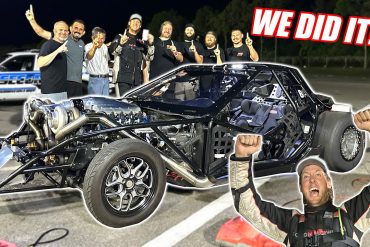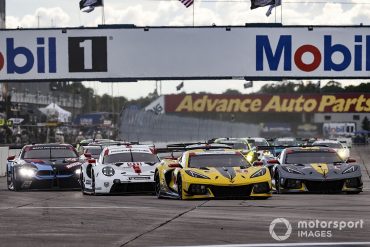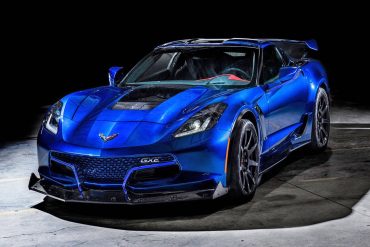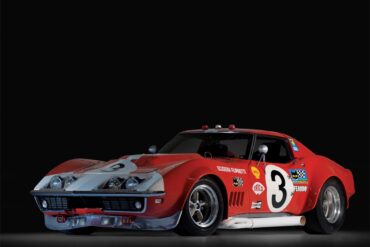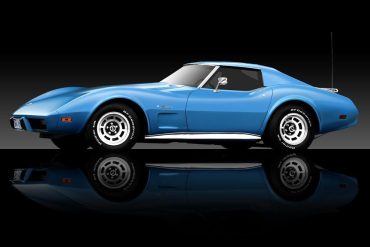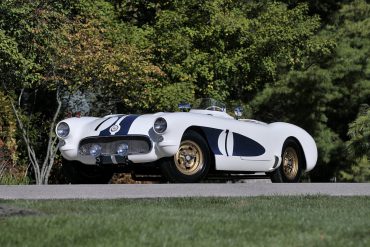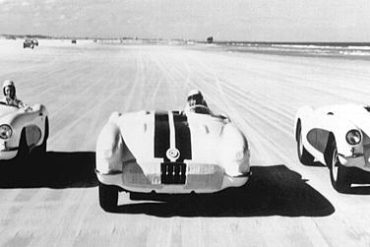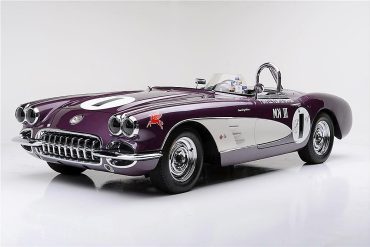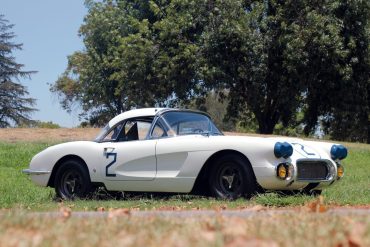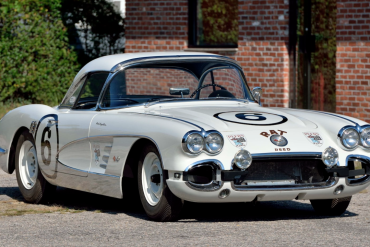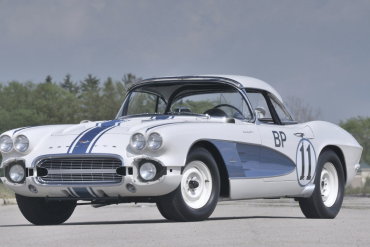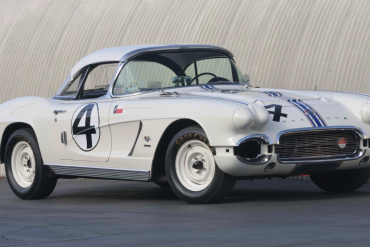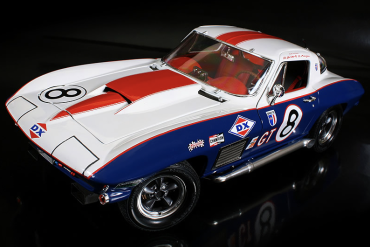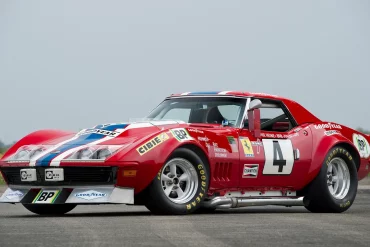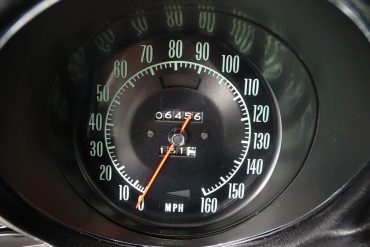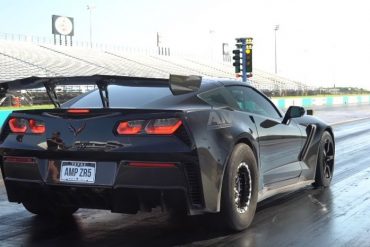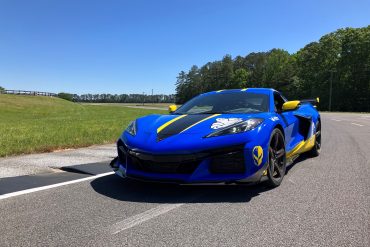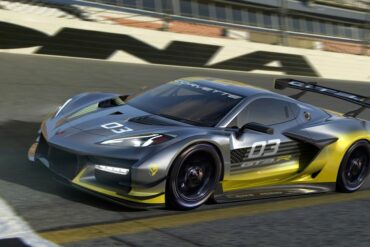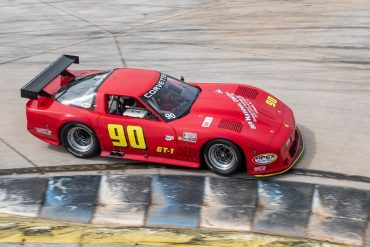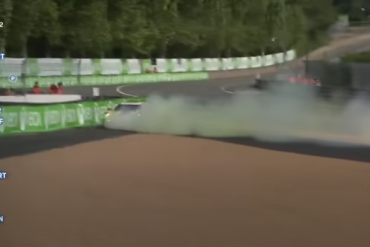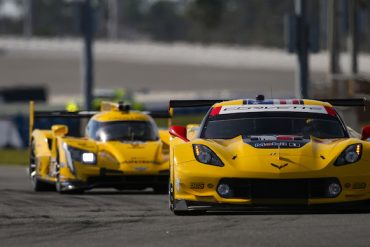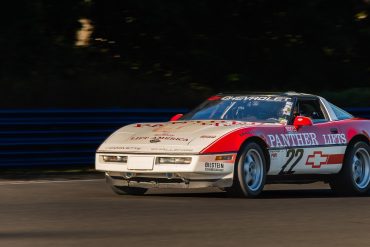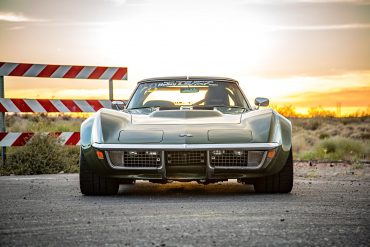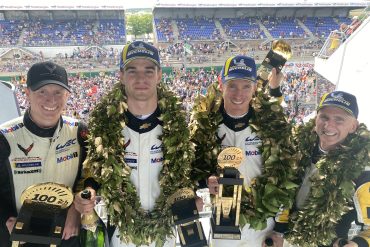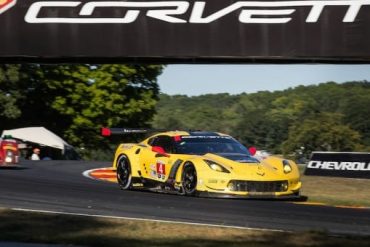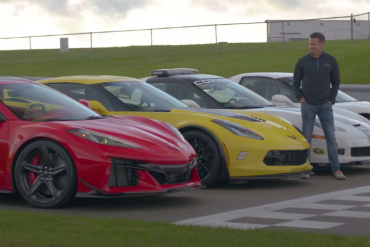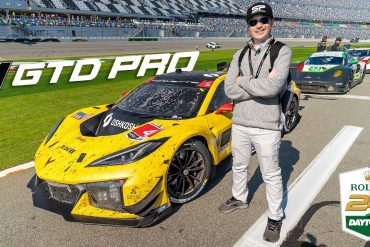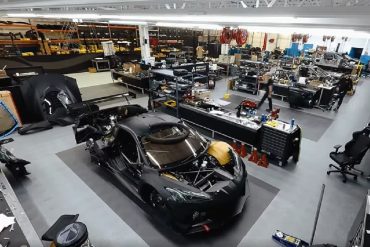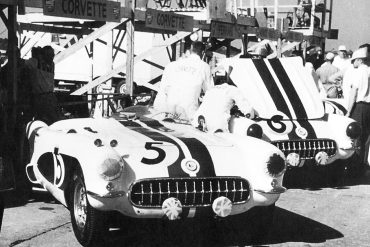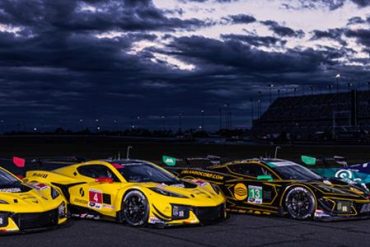As you can see from the lead picture, this isn’t your ordinary Corvette, and that’s the catch. And the folks...
Corvette Racing at Road America: Another 1-2 Finish for the C8.R Corvette Race Teams! While there has been a lot...
Some Cool Corvette Racing Records That Surprised Even Us It’s no secret that the Corvette has achieved more than its...
Our Favorite Corvette Racing Highlights Over The Decades Without exception, the Corvette has proved itself a valid contender on the...
Corvette Records You Probably Didn’t Know About The Corvette has made more history than perhaps any other domestic performance vehicle...
In 1956, Ed Cole, then General Manager of Chevrolet, decided Corvette could be saved from extinction due to lagging sales by promoting the car as a performance car which could be raced in production classes. The first of these Corvettes was to debut at Daytona Beach for acceleration and top end speed trials, the 12 hour race at Sebring, and also possibly Le Mans.
Duntov started off with a ‘54 Corvette as his test mule. He knew that accomplishing his goal would require two things: more power and improved aerodynamics. First, he removed the stock windshield and built a small windscreen. A tonneau cover was then added to the passenger side, and a fairing with a long fin was added to the rear deck behind the driver’s head.
The Purple People Eater MKIII is a 1959 Corvette that was literally unbeatable in SCCA B-Production racing in the late 1950s. There were three Purple People Eaters built in 1958 and 1959. The 1959 model, won every race it entered, except the last one, with Jim Jeffords behind the wheel and mechanic Ronnie Kaplan turning wrenches. The car was built by a team at Nickey Chevrolet in Chicago.
The story of the Corvette and how it came to race at Le Mans is one in which the dreams of a number of individuals intersect, over a prolonged period of time. While each of these dreamers came from vastly different backgrounds and held often times very different agendas, they all shared a common vision—an American sports car winning the 24 Hours of Le Mans. For Le Mans, the Sebring #2 car was renumbered as #1.
Known as the “Race Rat,” this rare 1960 Corvette is one of just 10 produced by the factory with the LPO (Limited Production Option) 1625A 24-gallon fuel tank designed by Zora Arkus-Duntov for racing purposes to reduce the frequency of pit stops. A true factory-prepared race car, this 1960 Chevrolet Corvette Tanker was ordered by gentleman racer and businessman George Reed of “Reed’s Race Rats” fame to compete in 1960 Sebring 12 Hours.
This 1961 Chevrolet Corvette factory race car possesses a host of rare options and a provenance worthy of the velvet rope treatment at any of the world’s finest auto museums or vintage races. Gulf Oil sponsored and driven to an SCCA B-Production national championship by the likes of Dr. Dick “The Flying Dentist” Thompson and Don Yenko, it stands as one the most successful and important production-based Corvette race cars ever constructed.
Always on the hunt for greater speed and greater thrills, Delmo decided to replace the '61 he had been racing with a brand-new 1962 Chevy Corvette. Owing to his demonstrated skill behind the wheel and prior successes with Corvettes, Delmo had a close relationship with legendary chief engineer Zora Arkus-Duntov and enlisted his assistance with the new car. "It was easy," Delmo recalls. "I called Zora and said, 'Build me a race car.' The only other thing I said was to make it white."
At Sebring in 1967, the Corvette L88 made its debut appearance. The L88 package included many competition components which included a M22 transmission, large disc brakes, upgraded suspension and an alumunim head 427. Shortly after the race, the L88 option would be offered on production cars which was a formidable package.
The Corvette L88 Scuderia Filipinetti Le Mans Racer holds a significant place in Corvette's racing history. With a coil spring front suspension and an L88 engine prepped by Zora Arkus-Duntov and smuggled out the back door to circumvent GM's ban on racing, the L88 was driven at the 1968 24 Hours of Le Mans by Henri Greder and Umberto Maglioli. It dominated the Porsches and led the GT class til 6th hour when carburetion problems melted a piston.
Automotive history is full of outlandish tales and shenanigans, many of which would be hard to believe if the fine...
A Corvette ZR1 Built By Advanced Modern Performance Runs a Boost-Only 8.57 Quarter-mile This “Track Missle” Corvette Sets the Bar...
In an article originally shared thru the NCM Motorsports Park newsletter, we came across the story we’re about to share...
Blurring the Lines Between the Road and the Racetrack – the 2024 Corvette Z06 GT3.R When GM announced they’d be...
Photography by Chuck Andersen. Corvettes graced the track at the 2024 HSR Spring Fling, hosted in Florida at the renowned...
As we prepare for the longest (and arguably best) racing event of the year, I’ve curated all the pre-race news...
Heavy Rain and Electrical Problems Caused Issues for Corvette Racing – But Did Not Keep Them From Finishing! DAYTONA BEACH,...
Since its debut in 1953, the Corvette has captivated enthusiasts with its sleek design, powerful engines, and exceptional performance while...
Garrett Randall has been into cars since the age of 13, as he explains in the video below. It started...
At 10:03 AM ET Nicky Catsburg brought the #33 Mobil 1/Sirius XM C8.R across the finish line! There was fierce...
CORVETTE RACING AT ROAD AMERICA Milner, Gavin place second in GTLM; Garcia, Magnussen finish third in tight championship ELKHART LAKE,...
Thanks to HorsePower Obsessed for bringing us this amazing comparison video, showing the C8Z06 taking on all previous Z06 generations. ...
Based on Chevrolet’s incredible 2023 Corvette Z06 supercar, the Z06 GT3.R shares more components and features with its street car...
CorvSport is your go-to source for all things Corvette, including the riveting IMSA and FIA racing series and the dominating...
Ed Cole, Zora Duntov’s ultimate boss, was eager to race. He saw it as a way to gain the kudos...
If you’re looking for all the juicy details as IMSA heads into its season finale at Road Atlanta, look no...


